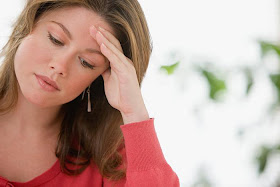by rachel.broune
Photo: tappmedical.com
Feelings of sadness are normal, appropriate and even necessary during life's setbacks or losses. Or you may feel blue or unhappy for short periods of time without reason or warning, which also is normal and ordinary. A depressive disorder is an illness that involves the body, mood, and thoughts. It affects the way a person eats and sleeps, the way one feels about oneself, and the way one thinks about things. A depressive disorder is not the same as a passing blue mood. It is not a sign of personal weakness or a condition that can be willed or wished away. People with a depressive illness cannot merely "pull themselves together" and get better. Without treatment, symptoms can last for weeks, months, or years. Appropriate treatment, however, can help most people who suffer from depression.
Depression can happen to anyone of any age, race, class or gender. It afflicts almost 19 million Americans each year, and up to one in five American women will suffer from clinical depression at some point in her life. Women are two to three times more likely than men to suffer from depression. Many women first experience symptoms of depression during their 20s and 30s. Once you experience depression, there's a 50 percent chance that you'll be depressed again at some point in your life.
One reason that treatment for depression is inadequate is that many people do not know or are confused about where to seek mental health treatment. Another reason is that many individuals do not perceive depression as a real medical condition that should or can be treated. Also, there is still a social stigma attached to mental illnesses like depression. These perceptions are wrong. Depression is a potentially life-threatening disorder and a woman does not have to "just live with it."
Women experience depression about twice as often as men. Many hormonal factors may contribute to the increased rate of depression in women particularly such factors as menstrual cycle changes, pregnancy, miscarriage, postpartum period, pre-menopause, and menopause. Many women also face additional stresses such as responsibilities both at work and home, single parenthood, and caring for children and for aging parents.
Although men are less likely to suffer from depression than women, 6 million men in the United States are affected by the illness. Men are less likely to admit to depression, and doctors are less likely to suspect it. The rate of suicide in men is four times that of women, though more women attempt it. In fact, after age 70, the rate of men's suicide rises, reaching a peak after age 85.
Source: ArticleTrader.com

No comments:
Post a Comment